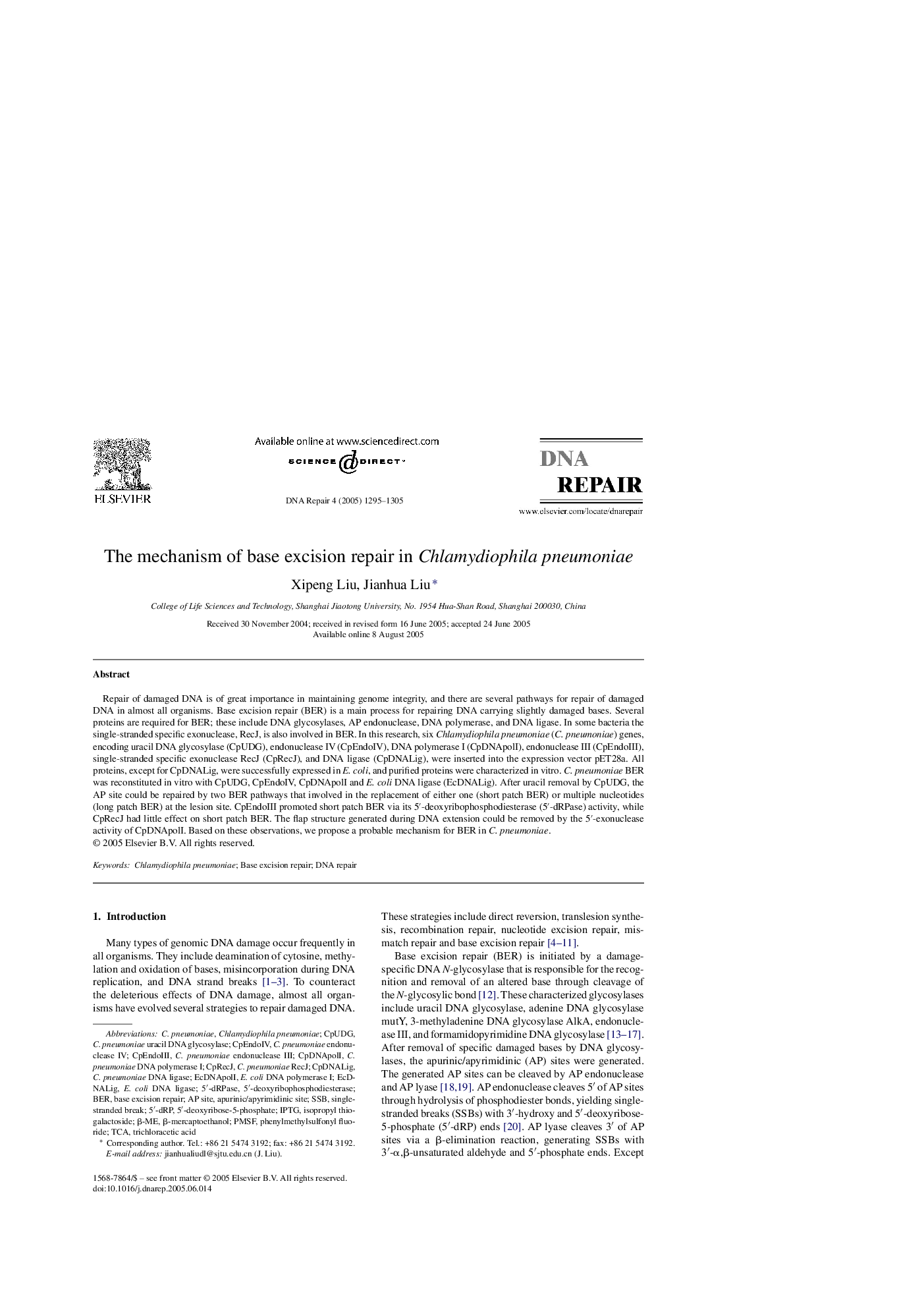| Article ID | Journal | Published Year | Pages | File Type |
|---|---|---|---|---|
| 10823998 | DNA Repair | 2005 | 11 Pages |
Abstract
Repair of damaged DNA is of great importance in maintaining genome integrity, and there are several pathways for repair of damaged DNA in almost all organisms. Base excision repair (BER) is a main process for repairing DNA carrying slightly damaged bases. Several proteins are required for BER; these include DNA glycosylases, AP endonuclease, DNA polymerase, and DNA ligase. In some bacteria the single-stranded specific exonuclease, RecJ, is also involved in BER. In this research, six Chlamydiophila pneumoniae (C. pneumoniae) genes, encoding uracil DNA glycosylase (CpUDG), endonuclease IV (CpEndoIV), DNA polymerase I (CpDNApolI), endonuclease III (CpEndoIII), single-stranded specific exonuclease RecJ (CpRecJ), and DNA ligase (CpDNALig), were inserted into the expression vector pET28a. All proteins, except for CpDNALig, were successfully expressed in E. coli, and purified proteins were characterized in vitro. C. pneumoniae BER was reconstituted in vitro with CpUDG, CpEndoIV, CpDNApolI and E. coli DNA ligase (EcDNALig). After uracil removal by CpUDG, the AP site could be repaired by two BER pathways that involved in the replacement of either one (short patch BER) or multiple nucleotides (long patch BER) at the lesion site. CpEndoIII promoted short patch BER via its 5â²-deoxyribophosphodiesterase (5â²-dRPase) activity, while CpRecJ had little effect on short patch BER. The flap structure generated during DNA extension could be removed by the 5â²-exonuclease activity of CpDNApolI. Based on these observations, we propose a probable mechanism for BER in C. pneumoniae.
Keywords
Related Topics
Life Sciences
Biochemistry, Genetics and Molecular Biology
Biochemistry
Authors
Xipeng Liu, Jianhua Liu,
